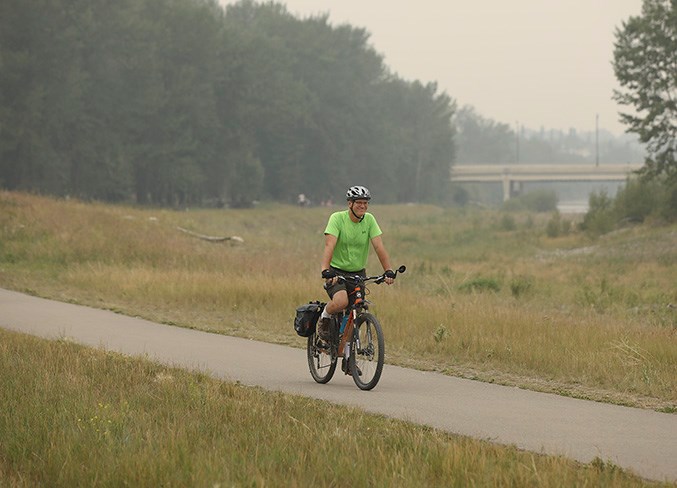Rain showers and a quick-moving low-pressure system helped clear the air for those sensitive to heat and smoke this week, but poor air quality has now returned to the area. Air quality was compromised in the Foothills over the past two weeks due to fires in B.C., but it came to a head from Aug. 9 to 11, before a change in weather pattern carried the smoke into Saskatchewan. On Saturday, Aug. 11, as smoke from northern Alberta also settled into the area, the Air Quality Health Index reached 9 and 10 on the scale – the highest possible risk level. By Sunday evening the smoke had cleared from the Foothills and as of Aug. 13 the Air Quality Health Index had dropped down to 2 or 3, which indicates low risk. Though Foothills residents saw some reprieve for the following three days, it didn't last long. More smoke moved into the area Aug. 15, pushing the Air Quality Health Index up to 10+, or "Very High Risk," where it's expected to stay for at least two or three days, “We use the Air Quality Health Index as a risk assessment and communication tool,” said Dr. Jason Cabaj, a medical officer of health with Alberta Health Services. The current high-risk situation comes as no surprise, as there are now more than 600 wild fires burning in B.C., of which 47 are “of note” – highly visible or causing a potential threat to public safety. One fire in northern B.C. is estimated to be larger than 3,000 hectares. At the same time last year, there were 150 fires burning in the province. Cabaj said some people are more sensitive to air pollution, like those with pre-existing heart or lung disease like asthma or Chronic Obstructive Pulmonary Disease (COPD) and those at the extremes of age – young children and older adults. “Then there are also people who are exposed more, so outdoor workers and others who might be active in the outdoor air and exposed to more of the pollution,” said Cabaj. He said it’s important for these people to monitor their symptoms as air quality declines, watching for signs like eye and throat irritation or a new cough. At that point, physical activity should be cut back, he said. During times of extreme heat, such as the record-breaking high temperature of 38 degrees Celsius on Aug. 10, the issues are compounded, he said. With forecast highs expected to still reach into the 30s periodically through the end of August, it’s important for people to take care of themselves, he said. “Times when we have extreme heat that’s the predominant thing to be focused on actually, more than air quality,” said Cabaj. “We wouldn’t want people reacting too much to the air quality, going indoors in a place that’s even hotter and putting themselves at risk for heat illness.” In some cases it may make sense for someone with respiratory issues to stay inside if the air quality is classified as high risk, but Cabaj cautions those people to ensure they can access a place that is air-conditioned or has circulating air during high temperatures to help stay cool and access clean air. Heat illness symptoms to watch for in oneself or others include suddenly odd behaviour, confusion, not sweating after sweating for a period of time, or even losing consciousness, he said. Usually heat stroke can be avoided, he said. “It’s really thinking about being prepared for it, being hydrated, planning to avoid the heat as much as possible during peak hours,” said Cabaj. “If you do need to go out try to find opportunities to take breaks from being exposed to the heat.”




